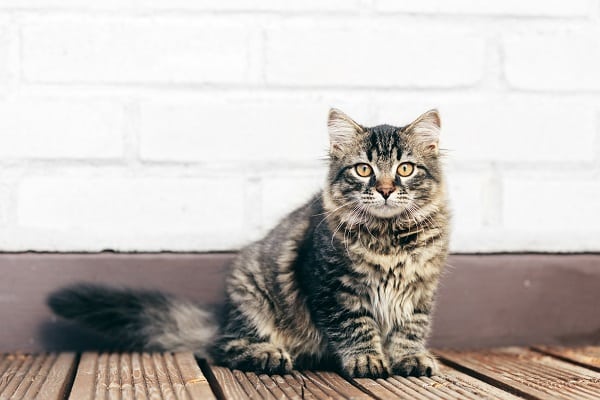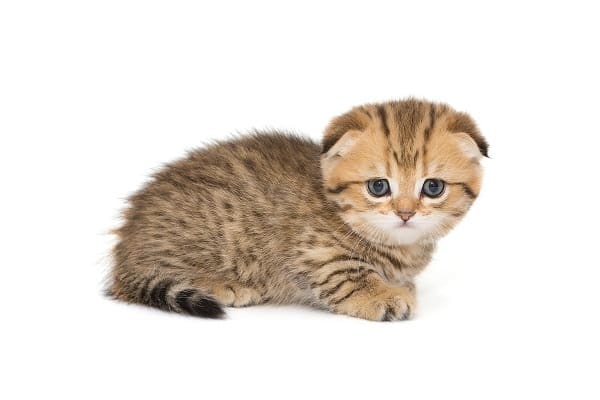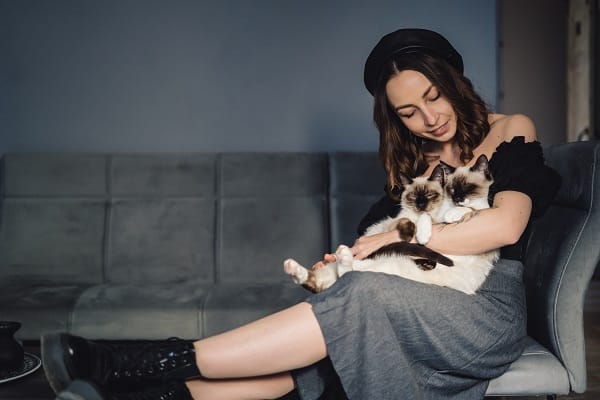Do you ever feel like your cat is trying to tell you something, but you’re not quite sure what it is? Well, it should come as no surprise that cats use their body language to communicate with you, and if you learn how to interpret it correctly, you can understand them better. This article will discuss the different things your cat might be trying to tell you by reading your cat’s body language. It will also provide tips on how to help your cat feel more comfortable and relaxed around you.
The Ways Cats Interact With Their Owners

Cats are normally aloof and independent, but the truth is that they form strong bonds with their owners. While they may not show their affection in the same ways as dogs, cats develop deep and lasting relationships with those who care for them. Cats typically interact with their owners in three ways: physical contact, vocalization, and body language. When a cat rubs against your leg or climbs into your lap, it seeks physical contact. This behavior is known as “bunting” and is the cat’s way of marking you as its own. Cats also communicate through meowing and purring.
Meowing is usually a sign of hunger or frustration, while purring indicates contentment. Finally, cats use body language to communicate their feelings. And that may be the most important because often, it’s the only way they can tell you what they need.
Understanding Your Cat’s Body Language
To fully understand your cat’s body language, you must know what to look for. Even if it seems like your cat is just lounging around, it’s important to pay attention to the messages they are trying to send. Below you will find some of the most common things your cat might do and what they mean:
Flicking Their Tail Back And Forth

If you’ve ever owned a cat, you know they’re creatures of habit. They like their food served at the same time each day and their litter box cleaned regularly. So when your cat’s behavior changes, it can cause concern. One behavioral change to watch for is tail flicking. When a cat’s tail moves back and forth quickly, it usually means they’re feeling agitated. This can be due to several things, such as a new person or animal in the home, a change in routine, or even something as simple as a loud noise.
If you notice your cat’s tail flicking, take a moment to assess the situation and see if there’s anything that might be causing your cat stress. If you can’t identify the cause, it’s always best to consult with your veterinarian to rule out any underlying health issues.
Arching Their Back And Raising Their Fur

When your cat arches its back and raises its fur, it’s doing two things: trying to make itself look bigger and releasing some of the tension in its body. A cat’s instinct is to avoid conflict whenever possible, but sometimes they find themselves in situations where they feel threatened. They’re trying to convey that they’re not to be messed with by making themselves look larger and more intimidating.
At the same time, the raised fur allows them to release some of the tension and stress they’re feeling. So, if you see your cat arching its back and fluffing up its fur, it’s a good idea to give it some space and let it calm down on its own.
Rolling Around On Their Back

If you have seen your cat rolling around on their back, you may have wondered what they were up to. While it may look like they are just enjoying a good stretch, there is more to it. When cats roll around on their backs, they reveal their belly as a sign of trust. Exposing their most vulnerable area indicates that they feel safe and comfortable in their surroundings.
In addition, rolling around on their back helps cats spread their natural scent and serves as a visual warning to other animals that this territory is already claimed. So the next time you see your cat rolling around on their back, take it as a compliment – they trust you enough to show you their belly!
Kneading

When a cat kneads, they rhythmically press their paws into whatever surface they’re on – whether that’s your lap, a blanket, or just the floor. While it might look like they’re just enjoying a good stretch, there’s more to it. Cats typically start kneading when they’re kittens, as it helps them stimulate their mother’s milk flow.
However, even adult cats will continue to knead, as it provides them with a sense of comfort and security. Many cats will only knead when they’re feeling relaxed and content. So next time your cat kneads away, take it as a sign that they’re happy and safe in their surroundings.
Flattening Their Ears

You may have noticed this one in the past, your cat flattening their ears. This usually means that they are feeling threatened or uncomfortable. The position of the ears allows them to hear potential predators better and helps them to gauge the distance of any threats. Flattened ears also make cats appear larger, which can intimidate would-be attackers. If your cat is flattening their ears around you, it’s a good sign that they don’t feel safe.
Try to identify what might make them feel uneasy and see if you can remove the source of their stress. If your cat’s ears are flattened persistently, it might be time to consult with a vet or animal behaviorist to help them learn to feel more comfortable in their environment.
Tucking Their Tail

This might be a bit more obvious than others, but when your car is tucking their tail, it can signify they are feeling threatened or scared. Their instinct is to protect their vulnerable underside from predators. This reflexive action is called ‘toning.’ You might see your cat do this if there’s a loud noise outside or if they spot a new animal in the house. If you see your cat tucking their tail often, it could signify they are feeling stressed.
You can do several things to help reduce their stress, such as providing them with a safe place to hide or using pheromone diffusers to help them feel more relaxed. By understanding what your cat’s tail tells you, you can provide them with the care and attention they need to feel safe and happy.
Take Time To Understand Your Cat’s Body Language!
Cats genuinely are peculiar creatures. But, by understanding their body language, you can better understand what they’re thinking and feeling. So next time your cat does something odd, take a step back and try to interpret their actions. You might be surprised at what you learn! And if you ever feel like your cat is showing signs of stress or anxiety, be sure to consult with a professional to help them feel more comfortable. After all, your feline friends deserve nothing but the best!